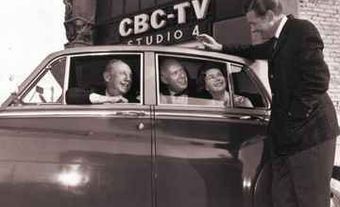Community Broadcasting
Community Broadcasting is designed to fulfil social and cultural needs by allowing members of the audience to participate in decisions about programming and, in the case of radio, in the ownership of stations. It serves local communities, reflecting the diversity of their views and needs, and provides access to volunteer participants. It is public broadcasting, but it is not operated by a government or a government agency. Most Canadian cities with populations greater than 50 000 people have a community radio station.
More than 150 community radio services have been developed in Canada. They are supported by donations, advertising, memberships and, particularly in the case of Québec and native broadcasting, with federal and provincial grants.
Specialization in Community Broadcasting
Community radio takes many different forms and typically targets under-served groups, including Franco-Ontarians, Acadians and First Nations; however, there are many English-language stations and stations that serve sub-groups within major urban centres. In Vancouver and Montréal, stations are owned by members of a society or co-operative, and programming includes news, public affairs, music, "live" performances, coverage of public meetings, special interest material and a multilingual service. In several smaller centres, mainly in Québec, community radio stations focus primarily on a single type of programming, such as music or a multilingual service.
Student-operated radio is provided on FM to or by closed circuit, often appealing to a wider community with educational programs, unusual music selections, and coverage of university sports and events. Multilingual radio, on FM or transmitted by cable, is community broadcasting, if it is operated on a nonprofit basis.
In northern, rural and remote communities, community radio stations provide programming similar to that of small commercial stations. They are operated by Aboriginal broadcasting societies, and some broadcast in First Nations languages. Some are supported by the CBC, which also broadcasts Aboriginal programming as part of its northern service.
Community Broadcasting and the CRTC
Most community stations are members of the National Campus and Community Radio Association, a not-for-profit association dedicated to advancing campus and community radio broadcasting in Canada. It works closely with other organizations, including the Canadian Radio Television Commission (CRTC).
The first community radio stations were licensed on an experimental basis by the CRTC in the early 1970s, and commercial advertising was not permitted. In 1975 the CRTC formally recognized community radio with a special licence, and permitted limited advertising.
By 1984 commercial broadcasters complained that community radio stations, particularly in Québec, were competing with them unfairly in small communities because community stations received subsidies from the provincial government and carried advertisements. The CRTC conducted a comprehensive review and its policy, issued in 1985, developed regulations for different types of community stations, removing many of the restrictions on advertising.
Community stations are subject to the CRTC community radio policy that requires community stations to: facilitate community access to programming; promote the availability of training; provide ongoing training to those wishing to participate in programming. Additionally, the CRTC policy requires community stations to provide diverse programming that reflects: music by new and local talent; music that is not widely broadcast by commercial stations; spoken word; and local information.
Cable Systems
Cable systems have included a community television service since the early 1970s, and provisions for a community channel on cable were included in the CRTC cable regulations in 1975, with changes made under the Broadcasting Act in 1991 and a new Telecommunications Act in 1993. Cable operations are required to provide a channel on a priority basis on their basic service, and all but the smallest systems are expected to contribute 10% of their gross revenues to its operation.
Community television is intended to be different from commercial television, and to be local in orientation, drawing upon voluntary contributions from its audience. Its programs include "live" coverage of meetings, hearings and special events, consumer service programming and programs for special interest groups.
Advertising on the community television channel is prohibited. Revenues come from the licensed cable operators, who are legally responsible for all programming, although most appoint a community advisory committee. A few cable systems also provide a nonprofit multilingual channel, where limited advertising is permitted.
The Community Broadcasting Audience
In urban centres, community broadcasting has attracted small audiences, even though it overcomes some problems with the mass media: the influence of advertiser sponsorship on programs, the lack of coverage of local issues and of diversity in the television portrayal of community life. Its difficulties are its limited funding, the control exerted by the cable licensees, the preoccupation of some community broadcasters with being "representative" of all groups or their avoidance of public controversy and the emphasis placed on participation at the expense of the quality of programming.
Nonetheless, the Canadian effort is extensive, and the CRTC policies establishing community broadcasting are unique. Audience loyalty and public support for community broadcasting compensate for the relatively small size of its audiences.

 Share on Facebook
Share on Facebook Share on X
Share on X Share by Email
Share by Email Share on Google Classroom
Share on Google Classroom


